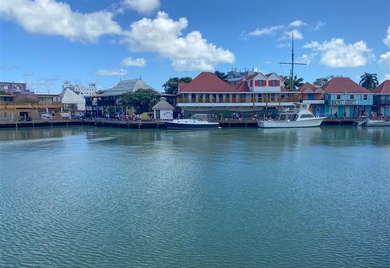IDB World: Alleviating the Credit Crunch, Helping the Galapagos, Electrifying Transportation

Easing the Credit Crunch on Small and Medium-Sized Enterprises
Small and medium-sized enterprises (SMEs) comprise the overwhelming majority of formal businesses and create around half of formal employment for the average country in Latin America and the Caribbean, with that percentage rising to 80% in some cases. Yet, despite their immense importance to the economy of the region, these firms consistently struggle to get access to credit and often find it burdensome and costly when they do.
The resulting scarcity of resources for SMEs is a drag on their ability to invest, grow, innovate, and create high quality jobs. Almost a quarter of firms in the region, both large and small, identified lack of financing before the COVID-19 pandemic as a major constraint, more than in advanced economies or Emerging Asia.
For micro, small and medium-sized enterprises or (MSMEs), the problem is particularly severe, with a financial gap of $1.8 trillion gap between demand and supply, according to some estimates, or more than five times the current supply.
Achieving a clean, just and inclusive energy transition for the Galapagos
The Galapagos Islands, in Ecuador, are recognized worldwide for their rich biodiversity and incomparable natural beauty. However, this natural heritage of humanity is threatened by the carbon footprint generated through human activities that take place in the archipelago. Today, land and sea transport are responsible for 70% of greenhouse gas emissions, which has a significant environmental impact, with effects on the endemic species of the islands.
For this reason, the energy transition plan for the islands called Energy Evolution has been developed, whose main objectives include reducing the emission of greenhouse gases and reducing the fiscal impact of subsidies for liquid fuels and electricity.
Another essential point of the plan is the participation of the inhabitants of the island, since it seeks to empower users in the leadership of the transition process. Likewise, in gender issues, a greater participation of women in the electrical sector of the islands is encouraged and, above all, the sustainability and protection of the biodiversity of the enchanted islands is ensured.
Electrifying transportation: A cost-effective way to modernize transportation and reduce emissions
Mobility is an essential element for well-being and economic movement. However, it also has a high environmental impact. In 2019, the transport sector was responsible for 40% of the CO2 emissions of the energy sector in Latin America and the Caribbean (LAC). This is a growing concern, since emissions from this subsector have grown by close to 30% since 2005.
In the case of LAC, the demand for urban passenger transport is estimated to multiply by 3.5 times by 2050.
Carbon emissions are not the only factor of concern related to the growth of mobility, there are also local emissions that directly affect health. On the other hand, the high dependence of transport on fuel prices has a direct impact on the economy. This impact is not homogeneous: people with lower incomes tend to be affected in a greater proportion of their expenses than people with higher incomes.
LIKE WHAT YOU JUST READ?
Subscribe to our mailing list to stay informed on the latest IDB Invest news, blog posts, upcoming events, and to learn more about specific areas of interest.
Subscribe



